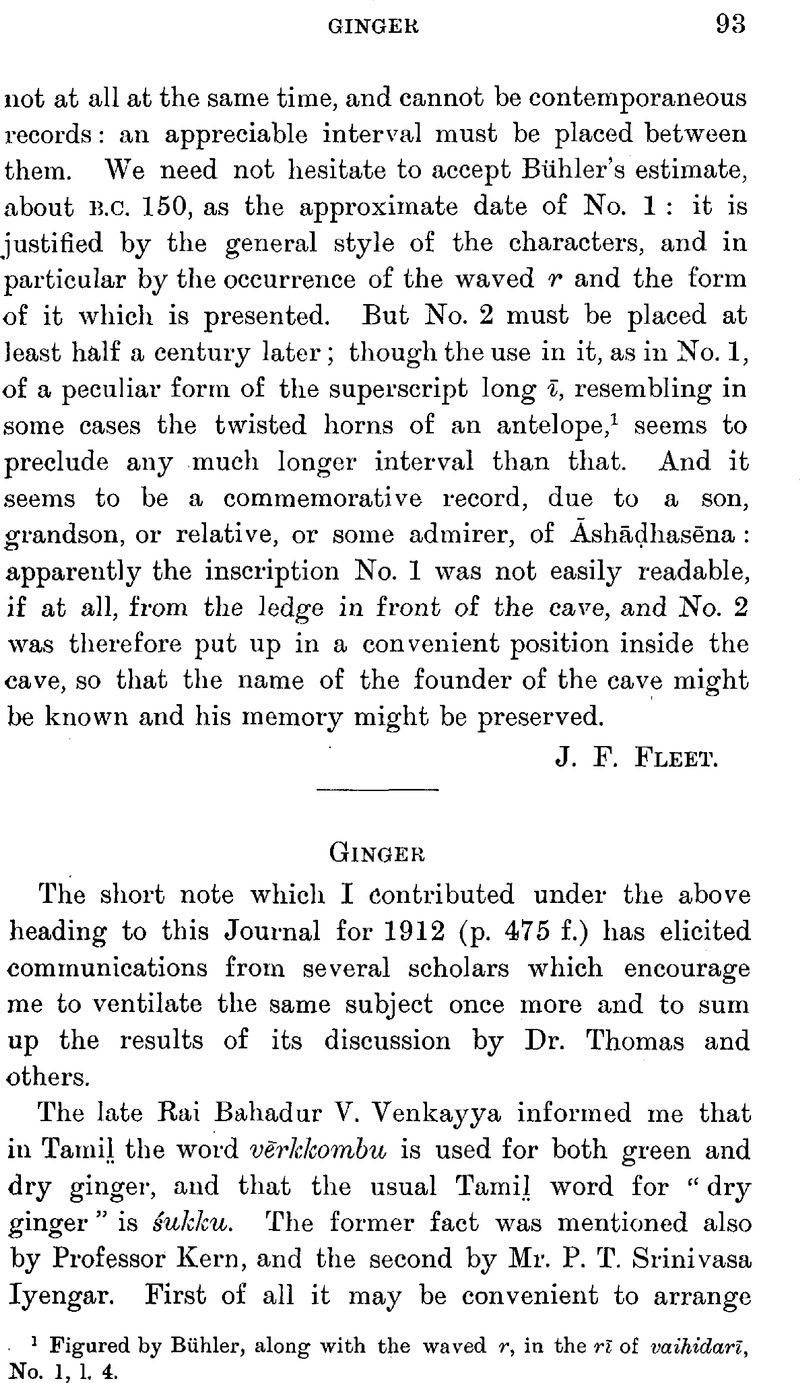No CrossRef data available.
Article contents
Abstract

- Type
- Miscellaneous Communications
- Information
- Copyright
- Copyright © The Royal Asiatic Society 1914
References
page 94 note 1 Ep. Ind., vol. 6, p. 238, text line 141 f.Google Scholar
page 94 note 2 Loc. cit., text line 138.
page 94 note 3 But, as Mr. P. T. Srinivasa Iyengar suggests, śuṇṭhi may be connected with the Tamil root śuṇḍu, “to dry up”.
page 95 note 1 Dr. Kittel (Kannaḍa Dictionary, p. xix) derived vēra from the Tamil. vayi ![]() u, “the belly”, a word which was known to Bhaṭṭa Kumārila; see now Ind. Ant., vol. 42, p. 201Google Scholar. In a Bharaut inscription (id. 21. 234, No. 92) the word Kuvēra is spelt Kupira.
u, “the belly”, a word which was known to Bhaṭṭa Kumārila; see now Ind. Ant., vol. 42, p. 201Google Scholar. In a Bharaut inscription (id. 21. 234, No. 92) the word Kuvēra is spelt Kupira.
page 96 note 1 Dr. Gundert (ZDMG, 23, 524) adds the following examples:—Tami![]() amaṇa, īyam, Ī
amaṇa, īyam, Ī![]() am = Prākṛit samaṇa, sīsa, Sāhala, and Malayālam mayayiram, and ōṇam = Sanskrit mṛigaśiras and śravaṇa.—E. H.
am = Prākṛit samaṇa, sīsa, Sāhala, and Malayālam mayayiram, and ōṇam = Sanskrit mṛigaśiras and śravaṇa.—E. H.
page 96 note 2 Cf. also the Telugu padi-hēnu, “fifteen”, and pada-hāru, “sixteen” in which the h may represent an original s.—E. H.




